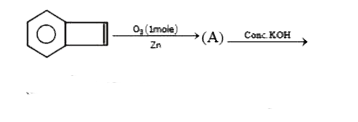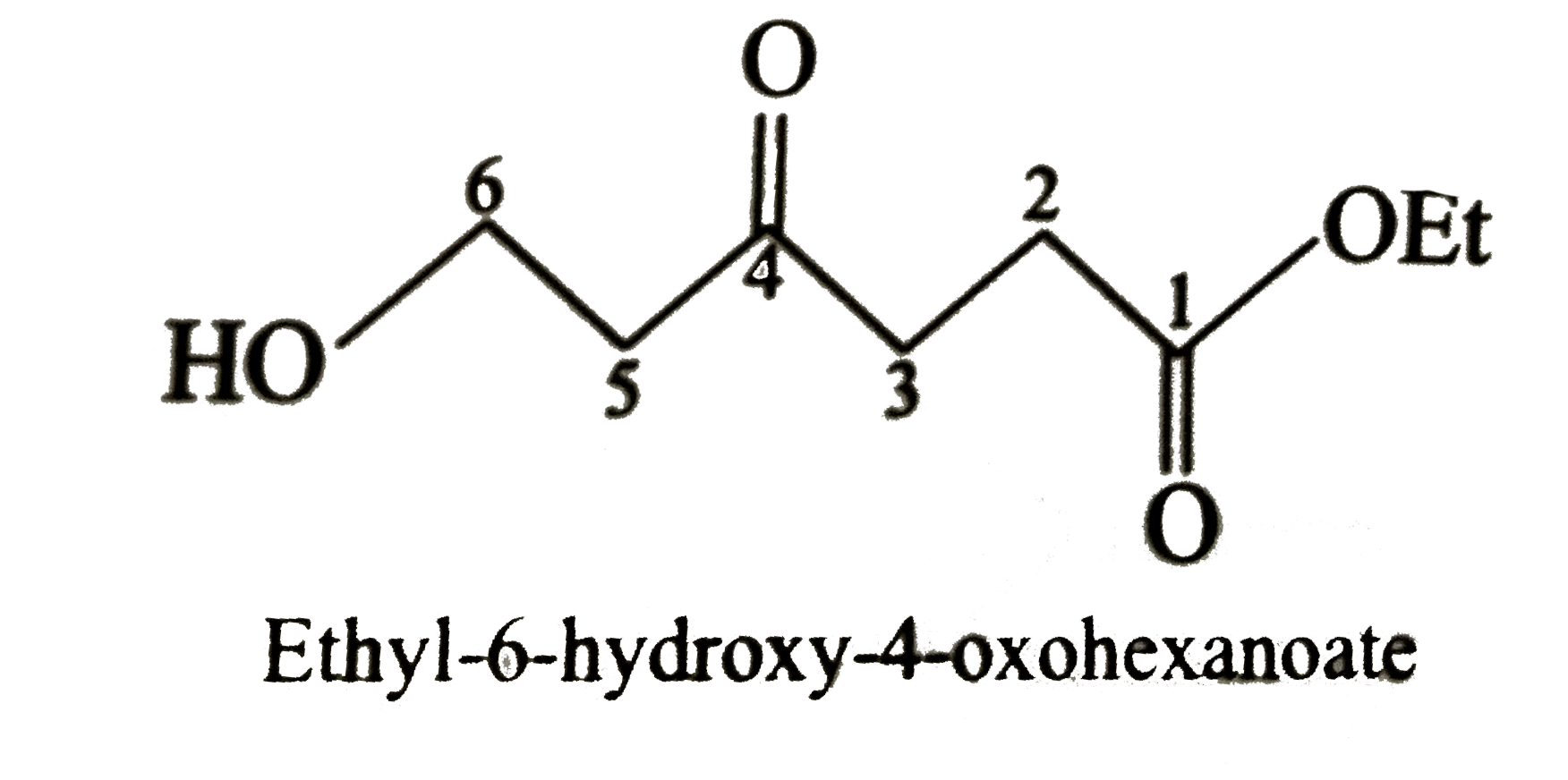Identify A,B,C,…. in the given reaction sequence .
Cyclopentanol [O]−−→A(i)CN−−−−−−−−→(ii)H+BH+−−−−−→ΔCH2O−−−−−→H+Eu
BH2O−−−−−→H+D
To solve the reaction sequence involving cyclopentanol, we will identify the compounds A, B, C, D, and E step by step.
Step 1: Oxidation of Cyclopentanol
- Starting Compound: Cyclopentanol (C5H10O)
- Reaction: When cyclopentanol is oxidized (using an oxidizing agent like (O)), it converts into a ketone.
- Product A: Cyclopentanone (C5H8O)
Structure:
A=Cyclopentanone(C5H8O)
Step 2: Nucleophilic Addition of Cyanide
- Starting Compound: Cyclopentanone (A)
- Reaction: Cyclopentanone reacts with cyanide ion (CN⁻) in the presence of acid (H⁺). This results in the formation of a cyanohydrin.
- Product B: 2-Hydroxy-2-cyanocyclopentane
Structure:
B=2-Hydroxy-2-cyanocyclopentane
Step 3: Heating with Acid
- Starting Compound: 2-Hydroxy-2-cyanocyclopentane (B)
- Reaction: When heated in the presence of acid (H⁺), the hydroxyl group can lead to elimination, forming an alkene.
- Product C: 2-Cyanocyclopentene
Structure:
C=2-Cyanocyclopentene
Step 4: Hydrolysis of C
- Starting Compound: 2-Cyanocyclopentene (C)
- Reaction: Hydrolysis of the cyano group (CN) in the presence of water (H2O) and acid (H⁺) converts it to a carboxylic acid.
- Product E: 2-Carboxycyclopentene
Structure:
E=2-Carboxycyclopentene
Step 5: Direct Hydrolysis of B
- Starting Compound: 2-Hydroxy-2-cyanocyclopentane (B)
- Reaction: Direct hydrolysis of the cyanohydrin (B) in the presence of acid (H⁺) converts the CN group to a carboxylic acid.
- Product D: 2-Hydroxycyclopentanoic acid
Structure:
D=2-Hydroxycyclopentanoic acid
Summary of Compounds
- A: Cyclopentanone (C5H8O)
- B: 2-Hydroxy-2-cyanocyclopentane
- C: 2-Cyanocyclopentene
- D: 2-Hydroxycyclopentanoic acid
- E: 2-Carboxycyclopentene
- Starting Compound: Cyclopentanol (C5H10O)
- Reaction: When cyclopentanol is oxidized (using an oxidizing agent like (O)), it converts into a ketone.
- Product A: Cyclopentanone (C5H8O)
Structure:
A=Cyclopentanone(C5H8O)
- Starting Compound: Cyclopentanone (A)
- Reaction: Cyclopentanone reacts with cyanide ion (CN⁻) in the presence of acid (H⁺). This results in the formation of a cyanohydrin.
- Product B: 2-Hydroxy-2-cyanocyclopentane
Structure:
B=2-Hydroxy-2-cyanocyclopentane
- Starting Compound: 2-Hydroxy-2-cyanocyclopentane (B)
- Reaction: When heated in the presence of acid (H⁺), the hydroxyl group can lead to elimination, forming an alkene.
- Product C: 2-Cyanocyclopentene
Structure:
C=2-Cyanocyclopentene
- Starting Compound: 2-Cyanocyclopentene (C)
- Reaction: Hydrolysis of the cyano group (CN) in the presence of water (H2O) and acid (H⁺) converts it to a carboxylic acid.
- Product E: 2-Carboxycyclopentene
Structure:
E=2-Carboxycyclopentene
- Starting Compound: 2-Hydroxy-2-cyanocyclopentane (B)
- Reaction: Direct hydrolysis of the cyanohydrin (B) in the presence of acid (H⁺) converts the CN group to a carboxylic acid.
- Product D: 2-Hydroxycyclopentanoic acid
Structure:
D=2-Hydroxycyclopentanoic acid
- A: Cyclopentanone (C5H8O)
- B: 2-Hydroxy-2-cyanocyclopentane
- C: 2-Cyanocyclopentene
- D: 2-Hydroxycyclopentanoic acid
- E: 2-Carboxycyclopentene
Similar Questions
Knowledge Check
In the reaction
CH_(3) CN + 2H underset("ether")overset(2 HCl)rarr X underset(Delta) overset(H_(2)O)rarr Y. Y isAdimethylamineBethanamineCacetaldehydeDacetone.In the reaction sequence
CH3−O∣∣C−H−HCN−−−→.ΘOH(A)H2O/⊕H−−−−→Δ Product is/are :ADiasteromersBRacemic mixture of hydroxy acidCProduct is racemic mixture of cyanohydrinDProducts is optically inactiveIdentify X,
H3C−CH3∣C=OCH3Mgl−−−−−−−→dry etherAH2O−−→X,ACH3OHBCH3CH2OHCCH3CHOHCH3DCH3C(OH)(CH3)2

O3(1mole)−−−−−−−−−→Zn(A)Conc.KOH−−−−−−→
(B) H+−−−−−→Δ(C ), Product (C ) is
View SolutionIn the given reaction sequence
CH3CHO(i)NaCN/HCl−−−−−−−−−−−−→(ii)H2O+(A)Fenton−−−−−−→reagent(B), B will be
View SolutionIn the reaction sequence Cyclohexane
hv/Cl2−−−→(A)alk.KOH/Δ−−−−−−−−→(B)(i)O3−−−−−−−−−→(ii)Zn/H2O. 'C' will be
View SolutionIdentify (C) in the following sequence of reactions :
H−O||C−H(1)CH3Mgl−−−−−−−−→(2)H2O/H+(A)NH3−−−−→C2H5OH(C)
View SolutionThe acid D obtained through the following sequence of reactions is:
C2H5BrAlc.KOH−−−−−→ABr2−−→CCl4BKCN−−−−−→(excees)CH3O+−−−→
View Solution

